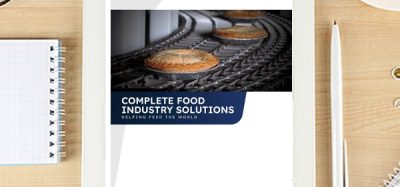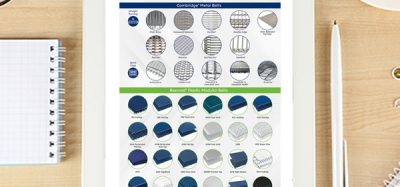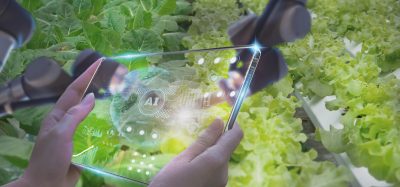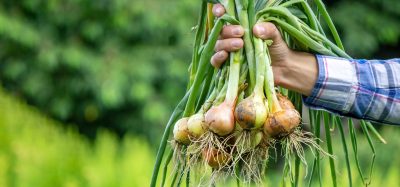Partnership with fishing industry proves a winner
- Like
- Digg
- Del
- Tumblr
- VKontakte
- Buffer
- Love This
- Odnoklassniki
- Meneame
- Blogger
- Amazon
- Yahoo Mail
- Gmail
- AOL
- Newsvine
- HackerNews
- Evernote
- MySpace
- Mail.ru
- Viadeo
- Line
- Comments
- Yummly
- SMS
- Viber
- Telegram
- Subscribe
- Skype
- Facebook Messenger
- Kakao
- LiveJournal
- Yammer
- Edgar
- Fintel
- Mix
- Instapaper
- Copy Link
Posted: 30 June 2010 | Toyota Material Handling | No comments yet
The harsh working environment of Norway’s fish production industry means that forklift trucks must be built to the highest order to survive and thrive. Enter Toyota Material Handling Norway. Strictly speaking, Fjordlaks Aqua AS (Fjordlaks means ‘Fjord Salmon’ in Norwegian) should not really be called Fjordlaks at all. It neither breeds, butchers, nor sells a single salmon. However, this is a company whose fish output is nothing short of prodigious, racking up around 20,000 tonnes of cod alone each year at its factory in Ålesund, located on the west coast of Norway and one of the country’s most important fishing harbours.
The harsh working environment of Norway’s fish production industry means that forklift trucks must be built to the highest order to survive and thrive. Enter Toyota Material Handling Norway. Strictly speaking, Fjordlaks Aqua AS (Fjordlaks means ‘Fjord Salmon’ in Norwegian) should not really be called Fjordlaks at all. It neither breeds, butchers, nor sells a single salmon. However, this is a company whose fish output is nothing short of prodigious, racking up around 20,000 tonnes of cod alone each year at its factory in Ålesund, located on the west coast of Norway and one of the country’s most important fishing harbours.
The harsh working environment of Norway’s fish production industry means that forklift trucks must be built to the highest order to survive and thrive. Enter Toyota Material Handling Norway.
Strictly speaking, Fjordlaks Aqua AS (Fjordlaks means ‘Fjord Salmon’ in Norwegian) should not really be called Fjordlaks at all. It neither breeds, butchers, nor sells a single salmon. However, this is a company whose fish output is nothing short of prodigious, racking up around 20,000 tonnes of cod alone each year at its factory in Ålesund, located on the west coast of Norway and one of the country’s most important fishing harbours.
The facility is divided into two parts: one handles the harvesting, cleaning and freezing of trout, while the second production building deals primarily with cod and whitefish. Typically, fish are de-headed, cleaned, salted and dried at the plant, before being packed in their different grades/class and shipped to markets in Portugal, Brazil, Dominican Republic, Jamaica, Congo and Angola.
The largest market is Portugal, which accounts for 7,500 to 9,000 tonnes out of a total production of around 12,000 tonnes annually. In all, the group produces around 20,000 tonnes of cod each year, with the remaining production taking place at plants in North Norway. This means that Fjordlaks accounts for around a fifth of the total Norwegian cod production.
Expanding Market Apart from the production of dried cod and frozen trout, Fjordlaks is also a major producer of fish oil, used in various foods and supplements. The oil, which is attracting an increasingly larger market internationally, is extracted from the liver and other fish by-products, and then purified to strict quality standards. Moreover, all the other waste from the cod and trout is used to produce the fish meal that goes to animal feed, so scarcely anything goes to waste.
The factory facility in Ålesund is comprised of two production halls. Whitefish and trout are received at either end of the plant, go through the production process and emerge as finished products between the two halls for shipment from the factory, making this a highly streamlined process.
When whitefish enters the facility, it is cleaned and then salted in large containers. Fish that is frozen, as much of it is, is first placed in a tank to thaw. Salting usually takes up to two weeks before the fish is forwarded to the drying machine, where it remains for two to six days, depending on the market for which it is intended.
“We prefer it if the fish is not absolutely bone dry,” “says John Erik Mathiesen, responsible for cod production at the plant. “That works best for us. But for the African markets, for example, we provide absolutely dry fish, due to the storage conditions out in the market. The fish are handled in large frames in the drying machines or rooms. Afterwards, they must be sorted manually before being packed and shipped out of the plant.” The fish will lose about half of their weight during production.
Key Role
Not surprisingly, forklift trucks play a key role in the whole process, especially during the production stage. This is particularly hard on the forklifts, which have to negotiate endless puddles of salty water as they manoeuvre in and out of the production areas. The forklifts also have to stand up to intense cold when moving goods in and out of cold store freezers.
“Very often when the fish is brought into the factory, there is a great deal of salt water in the boxes that gets splashed around when the rotators on the forklifts empty the contents on to the production lines,” says Kjell Einar Totsås, product manager, Toyota Material Handling Norway. “Inevitably, the forklift trucks get showered in the salt water, especially the rollers and lifting chains, which are very exposed. Even if the forklifts are produced of the highest quality materials and are as well protected as they are, they will rust due to the exceptionally harsh conditions. The major key is to delay that process with good protection, service and maintenance.”
Close Relationship
Toyota has always worked with the industry to understand its requirements and then built these into its forklift trucks. “Our aim has always been to offer the highest levels of protection and also to adapt our products to local need,” says Kjell Einar Totsås. Indeed, the company has a long and fruitful relationship with the Norwegian fishing industry. “This goes way back to the time when we worked closely together to develop forklift trucks that were able to cope with the very tough environment experienced in this industry and the robustness demanded of them,” he says. “Toyota in Norway worked alongside the fishing industry to ensure that the trucks were able to withstand the most challenging conditions.”
The range and versatility of Toyota Material Handling’s trucks ensure that Norway’s specific environmental regulations are fully adhered to, with electric trucks employed in those areas of the factory where engine powered trucks would not be permitted. At the same time, the latter operate in other parts of the factory where this is not an issue.
“There is also a demand from the fishing industry that the truck tyres are non marking, which is very important in a food environment where hygiene standards must be of the highest,” Kjell Einar Totsås points out. “Again, we ensure these needs are met.”
Switch to Toyota
Fjordlaks switched to Toyota forklifts a few years ago. “Since the transition, we have purchased over 30 trucks,” confirms Amund Pedersen, son of Fjordlaks founder Anders Pederson and one of the co-owners of the business. “In that time, everything has gone very well and we are definitely satisfied.”
Trucks last about four years in this business, he comments, such is the impact of the harsh conditions. “In addition to the hard and constant driving, the trucks in cod production work are operating almost permanently in heavy salt brine, so rust is a big problem. Precisely because the environment is harsh and the strains are enormous, we have chosen to run the 3.5-tonne, instead of the 2.5-tonne, trucks. We could possibly work with a lower load capacity, but the trucks are not as solid, in our experience.”
When it came to the choice of cab, the preference was non-tilt and the Toyota Tonero models won the day. Their Deluxe Cabins, low on noise and high on visibility, have been designed to maximise operating efficiency in extreme weather and working conditions. They benefit from a full suspension design, with an adjustable seat and height-adjustable steering column providing the ideal driving position. At the same time, easy-to-operate electronic minilevers and multifunctional levers provide fingertip control. “These fit well with our needs and offer excellent ergonomics,” states Amund Petersen.
Peak Performance
With the majority of the Norwegian fishing industry amongst its clients, Toyota Material Handling Norway’s primary focus has always been to ensure it delivers the highest levels of maintenance and support, so the trucks are always kept at peak performance. “We have technicians located right across the country to ensure this and also to show our customers how best to maintain the equipment in this demanding environment,” concludes Toyota Material Handling Norway’s Totsås. “By combining this with using trucks that are highly durable, they have the possibility to make big cost savings.”
Toyota Material Handling Europe offers a full range of Toyota counterbalanced forklifts and BT warehouse equipment, along with service and added value solutions to meet the materials handling needs of the food and beverage industry. It provides products, services and solutions to cover all such requirements – from loading, unloading and horizontal transport, to stacking, order picking and cold storage applications. The company is represented in Norway by Toyota Material Handling Norway.
Trout Business Flourishes
Salmon used to be one of the mainstays of Fjordlaks Aqua’s business. Since 1976, however, the company has invested in developing state-of-the-art trout farming facilities that take advantage of the exceptionally pure water in Norway’s fjords to produce trout of outstanding taste and quality. Some 90% of the trout goes to Japan – it is highly suitable for Sushi and there is no disadvantage to transporting the product frozen, given that it will still be frozen before use – while the rest goes mainly to Eastern Europe. Russia, for one, has started to import in earnest of late and may well prove to be an important market in the years ahead.
So, why aren’t the EU countries also importing trout from Norway, as is the case with salmon? “The main reason is that Europeans tend to think of trout as being smaller fish, measuring less than half a metre,” explains Amund Pedersen, Amund Pedersen, son of Fjordlaks founder Anders Pederson and one of the co-owners of the business. “We produce larger fish that are more like salmon, so they are less well known to most Europeans.”
Traceability Factor
The traceability of goods across the supply chain is becoming increasingly necessary, even in fish production. As a fully preserved product, cod presents no difficulties in this regard, its traceability being more a general market condition than a necessity. Trout, however, is without a preservative or salt, so its traceability is particularly important. Japan, for example, one of Fjordlaks Aqua’s major customers, sets high requirements for traceability where trout is concerned. This is not a problem for Fjordlaks, as it controls the whole trout supply chain itself – from breeding through to harvest. Moreover, it operates in strict compliance with all requirements and is also working on having a full tracking and traceability system in place by the end of this year
For other fish, Fjordlaks relies on smaller fishermen, who make their catches along the coast or out at sea and then deliver them to Fjordlaks. Ultimately, though, everything must still be traced back to its source.







